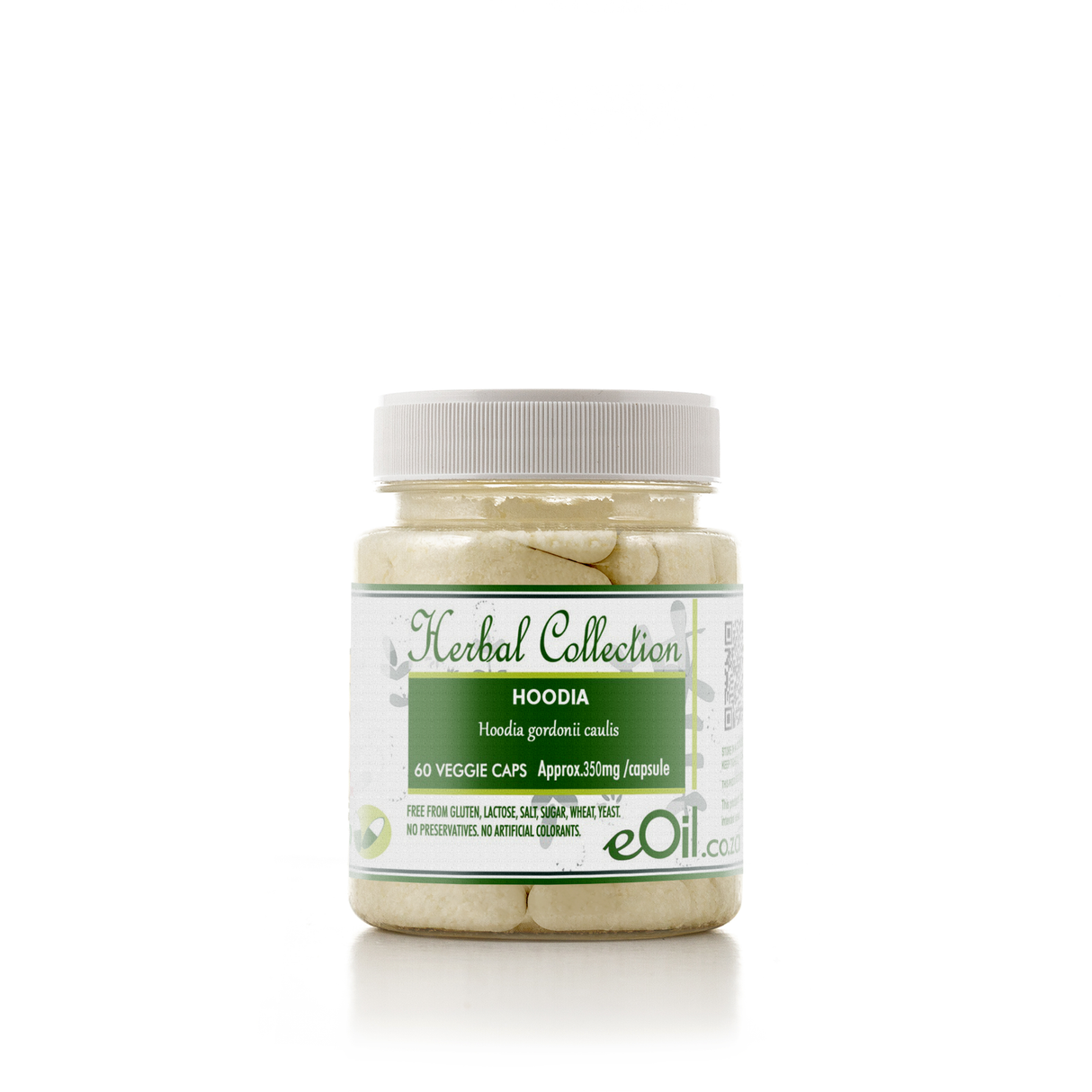Hoodia vegan capsules - Herbal Collection
Hoodia vegan capsules - Herbal Collection is backordered and will ship as soon as it is back in stock.
Description
Description
TRADITIONALLY USED FOR
Hoodia gordonii is primarily used in herbalism for the following purposes:
- As an appetite suppressant for weight loss. This is the most common and popular claimed use of Hoodia.
- To reduce hunger and thirst. Historically, it was used by indigenous San people of southern Africa to suppress appetite and thirst during long hunting trips.
- As a potential treatment for obesity, though more research is needed to confirm its effectiveness.
- As a dietary supplement marketed for weight management.
INFORMATION
Source : http://www.wikiphyto.org/wiki/Hoodia
Reference on http://www.wikiphyto.org
Translation in English by Google Translate (go to the page of the source linked | on Chrome cellphones go on the 3 dots on the top right and select translate in your preferred language | on laptop right click your mouse and select option translate when hoovering on the page
plant name
hoodia
International Latin denomination
Hoodia sp., Hoodia gordonii
botanical family
Apocynaceae
Description and habitat
- Thorny succulent plant about 50 cm high, having the appearance of a cactus, angular stems adorned with regular rows of brown thorns
- Native to Southern Africa (South Africa and Namibia), Kalahari Desert
- Flowers 80 to 100 mm in diameter, corolla fused with five lobes, light purple in color
History and tradition
- Rare and protected plant (listed since January 2005 in appendix II of the CITES Convention on International Trade in Endangered Species of Wild Fauna and Flora) like all species of the genus Hoodia )
Parts used
- Aerial part
Dosage forms available
Usual dosages
Composition
Main components of the plant
- Pregnane glycosides : hoodigosides WZ, hoodistanalosides AB [1] , [2]
- Gordonosides A to L [3]
Main components of buds or young shoots
Main components of essential oil
Properties
Plant properties
- Decreased appetite
- P57: compound for the treatment of obesity
- P57 would be a molecule 10,000 times more active than glucose in inducing satiety
Bud properties
Properties of essential oil
Directions
Indications of the whole plant (phytotherapy)
- Overeating obesity
Indications of the bud (gemmotherapy)
Specific indications of essential oil (aromatherapy)
Known or suspected mode of action
- P57 would induce satiety (molecule presented as 10,000 times more active than glucose)
Usual formulations
Regulations
Possible side effects and precautions for use
Bibliographic references
- Go↑ Shukla YJ, Pawar RS, Ding Y, Li XC, Ferreira D, Khan IA. Pregnane glycosides from Hoodia gordonii. Phytochemistry. 2009 Mar;70(5):675-83. PMID 19303614
- Go↑ Avula B, Wang YH, Pawar RS, Shukla YJ, Khan IA. Chemical fingerprinting of Hoodia species and related genera: chemical analysis of oxypregnane glycosides using high-performance liquid chromatography with UV detection in Hoodia gordonii. J AOAC Int. 2007 Nov-Dec;90(6):1526-31. PMID 18193728
- Go↑ Dall'Acqua S, Innocenti G. Steroidal glycosides from Hoodia gordonii. Steroids. 2007 Jun;72(6-7):559-68. PMID 17485103
- Avula B, Wang YH, Pawar RS, Shukla YJ, Schaneberg B, Khan IA. Determination of the appetite suppressant P57 in Hoodia gordonii plant extracts and dietary supplements by liquid chromatography/electrospray ionization mass spectrometry (LC-MSD-TOF) and LC-UV methods. J AOAC Int. 2006 May-Jun;89(3):606-11. http://www.atypon-link.com/AOAC/doi/abs/10.5555/jaoi.89.3.606
- MacLean DB, Luo LG. Increased ATP content/production in the hypothalamus may be a signal for energy-sensing of satiety: studies of the anorectic mechanism of a plant steroidal glycoside. Brain Res. 2004 Sep 10;1020(1-2):1-11. http://cat.inist.fr/?aModele=annonceN&cpsidt=16065010
- van Heerden FR, Marthinus Horak R, Maharaj VJ, Vleggaar R, Senabe JV, Gunning PJ. An appetite suppressant from Hoodia species. Phytochemistry. 2007 Oct;68(20):2545-53. Epub 2007 Jul 2. PMID 17603088
- Avula B, Wang YH, Pawar RS, Shukla YJ, Schaneberg B, Khan IA. Determination of the appetite suppressant P57 in Hoodia gordonii plant extracts and dietary supplements by liquid chromatography/electrospray ionization mass spectrometry (LC-MSD-TOF) and LC-UV methods. J AOAC Int. 2006 May-Jun;89(3):606-11. PMID 16792058
CAUTION
Store in a cool, dry place, away from light. Keep tightly closed, away from the reach of Children and pets.
Do not exceed the daily dose.
This product is not intended to prevent or cure any form of illness or disease.
If you are pregnant or nursing ; If you have a medical condition or are in the course of medical treatment ; If you are programmed for theater/operation in the near future, please consult your healthcare practitioner before using this product.
This product cannot replace a varied and balanced diet and a healthy lifestyle.
This product has not been evaluated by the SAHPRA for its quality, safety or intended use.
For More Information please check our General Safety Herbal products Page





